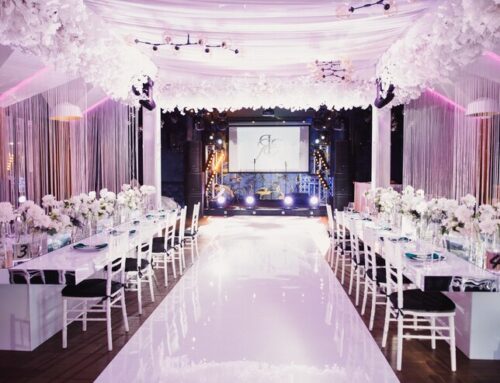Planning a wedding reception can feel like a complex puzzle, where every detail must fit perfectly into place. From the choice of venue to the menu, each decision contributes to creating a memorable experience. One of the most significant pieces of this puzzle is the centerpiece—the decorative focal point of each table. The perfect Centerpieces at Wedding Receptions NYT must balance elegance, personal style, and functionality, adding just the right touch to the overall atmosphere.
A Seven-Letter Word for Elegance: Centerpiece
In the world of crossword puzzles, finding the right word can be a moment of revelation, much like selecting the ideal centerpiece for a wedding reception. The New York Times crossword is renowned for its clever clues, where each answer fits precisely within the grid. Similarly, a wedding centerpiece must complement the reception’s theme, the couple’s personality, and the venue’s ambiance.
The centerpiece, a seven-letter word synonymous with elegance, plays a crucial role in setting the tone for the evening. It is not merely a decoration but a statement piece that reflects the theme of the wedding. Whether a lavish floral arrangement or a minimalist geometric sculpture, the centerpiece draws guests’ attention and is the heart of the table’s aesthetic. Like solving a challenging crossword, designing the perfect centerpiece requires creativity, patience, and a keen eye for detail.
Across and Down: Floral Arrangements
In the crossword grid, clues run across and down, intersecting to create a cohesive whole. The same can be said of floral arrangements in wedding centerpieces. Flowers have long been the traditional choice, offering endless color, texture, and symbolism possibilities. From lush, cascading bouquets to simple, single-stem displays, flowers can be tailored to fit any wedding style, from rustic to romantic.
Just as a crossword puzzle uses intersecting words to create a complete picture, a floral centerpiece combines various elements—flowers, greenery, vases, and accessories—to form a unified design. The choice of flowers can also be a clue to the wedding’s theme. For instance, peonies and roses might hint at a classic, romantic affair, while succulents and wildflowers could suggest a bohemian outdoor celebration.
The arrangement itself is another layer of complexity. Should the flowers be arranged in a tight, structured bouquet, or should they spill out of the vase in a more relaxed, organic style? This decision can be likened to the difference between a crossword puzzle’s symmetrical grid and the unpredictable layout of a cryptic crossword. Both styles can be beautiful, but they convey very different moods.
Cryptic Clues: Non-Floral Centerpieces
While flowers are famous, some couples opt for non-floral centerpieces, which can be as enigmatic and creative as the most cryptic crossword clues. These alternatives can include anything from candles and lanterns to books, vintage items, or even edible arrangements. The key to a triumphant, non-floral centerpiece is ensuring it still aligns with the wedding’s overall aesthetic and doesn’t feel out of place—like a crossword clue that must fit within the puzzle’s theme.
For example, a couple passionate about travel might use vintage globes or maps as their centerpieces, creating a visual narrative that tells their story. Similarly, a winter wedding might feature centerpieces made of pinecones, holly, and fairy lights, evoking the cozy warmth of the season. These choices are the equivalent of a crossword’s more abstract clues—initially puzzling but ultimately rewarding when the connection is made.
Thematic Relevance: Tailoring to the Wedding
In a well-constructed crossword puzzle, every clue and answer is carefully chosen to reflect the puzzle’s theme. The same principle applies to wedding centerpieces, which should be thoughtfully designed to enhance the reception’s theme. Whether the theme is vintage chic, modern minimalism, or a whimsical fairytale, the centerpiece must resonate with the couple’s vision and the overall décor.
For example, a rustic wedding might feature centerpieces made of mason jars filled with wildflowers, twine, and burlap. In contrast, a glamorous, black-tie affair could have towering arrangements of white orchids, crystal candelabras, and metallic accents. Each element within the centerpiece should feel intentional, contributing to the harmony of the event—much like how every word in a crossword puzzle contributes to its solution.
Puzzling Over Size and Scale: Practical Considerations
While the aesthetic appeal of a centerpiece is crucial, practical considerations also play a significant role in its design, much like the constraints of a crossword puzzle grid. The size and scale of the centerpiece must be appropriate for the table and venue. A towering arrangement in a grand ballroom might be stunning, but it could feel overwhelming in a more intimate setting. Conversely, a small, delicate arrangement might get lost on a large banquet table.
Additionally, the centerpiece should not obstruct guests’ views or impede conversation across the table—akin to ensuring that a crossword puzzle’s clues are clear and accessible. The centerpiece should enhance the guest experience, not detract from it. This balance between form and function is expected in puzzle-solving and event planning.
The Final Piece: Personalization
In crossword puzzles, the final piece is often the most satisfying to place, bringing everything together. For wedding centerpieces, this final piece is personalization. Incorporating elements that reflect the couple’s unique story or interests can transform a beautiful centerpiece into something truly memorable.
Personalization can take many forms, from including photos of the couple at each table to incorporating meaningful objects, such as family heirlooms or items representing shared hobbies. These personal touches are like the clever wordplay in a crossword puzzle—a nod to the solver’s skill and the creator’s ingenuity.
Conclusion: Solving the Puzzle of Wedding Centerpieces
Designing the perfect wedding centerpiece is like solving a crossword puzzle from The New York Times—it requires creativity, attention to detail, and a deep understanding of the larger picture. Whether floral or non-floral, traditional or modern, the centerpiece is a focal point that ties the entire reception together. By considering the theme, size, scale, and personal elements, couples can craft a centerpiece that beautifies their reception and tells their unique story—fitting seamlessly into the puzzle of their special day.






